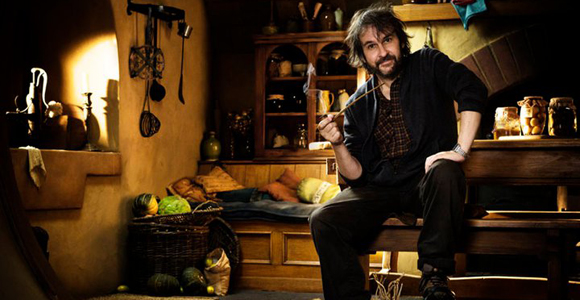Peter Jackson Responds To Negative Critiques Of The First Hobbit Footage
There And Back Again

Last week, CinemaCon allowed theater owners, film journalists, and other lucky individuals to view ten minutes of Peter Jackson’s The Hobbit. But instead of walking out impressed by the content, a lot of viewers were left worrying about the film. No, they didn’t think Jackson made a bomb, they’re specifically concerned with the 48 frames per second filming technology turning audiences off. Well, Jackson has something to say about that.
I remember when I viewed the first trailer for The Hobbit. At the time, I didn’t know that the film was shot at 48 FPS but my brain did. There was something just slightly off that was registering on a subconscious level. And that is exactly what those who saw the ten minutes of footage are complaining about.
“When Warner Bros. showed off 10 minutes of footage this week at CinemaCon, the annual convention for theater owners, many attendees complained that this version of Middle Earth looked more like a movie set than the atmospheric, textured world seen in The Lord of the Rings trilogy,” writes Entertainment Weekly. “There was a lot of love for Jackson’s storytelling — the scenes of young Bilbo Baggins (Martin Freeman, from the British version of The Office) battling a trio of goblins, and Ian McKellen’s Gandalf exploring the tombs of the now-reanimated wringwraiths, received universal praise. Complaints only centered on the technology used to capture and project the footage.”
Movies we’re used to watching were filmed at 24 FPS, at 48, images take on a more real-life quality, something some moviegoers may find off-putting. It’s so real, some say, that it looks fake. Though some say it makes 3D easier on the eyes.
“Nobody is going to stop. This technology is going to keep evolving,” said Jackson. “At first it’s unusual because you’ve never seen a movie like this before. It’s literally a new experience, but you know, that doesn’t last the entire experience of the film–not by any stretch, [just] 10 minutes or so. That’s a different experience than if you see a fast-cutting montage at a technical presentation.”
Jackson thinks viewers will “settle into it” once they actually see more than a few short minutes of the film on screen but that he knows there’s nothing he can do to convince people until then. “I can’t say anything,” he said. “Just like I can’t say anything to someone who doesn’t like fish. You can’t explain why fish tastes great and why they should enjoy it.”
But for those who still aren’t convinced they can handle the new technology, you’ll be happy to know you’ll be able to avoid it when the film debuts December 14. “The Hobbit: The Unexpected Journey will be available in six different ways: 3-D, 2-D, and IMAX 3-D, each one in both the traditional 24-frames style and the new 48-frames version,” writes EW.
(via Entertainment Weekly, /Film)
Have a tip we should know? tips@themarysue.com